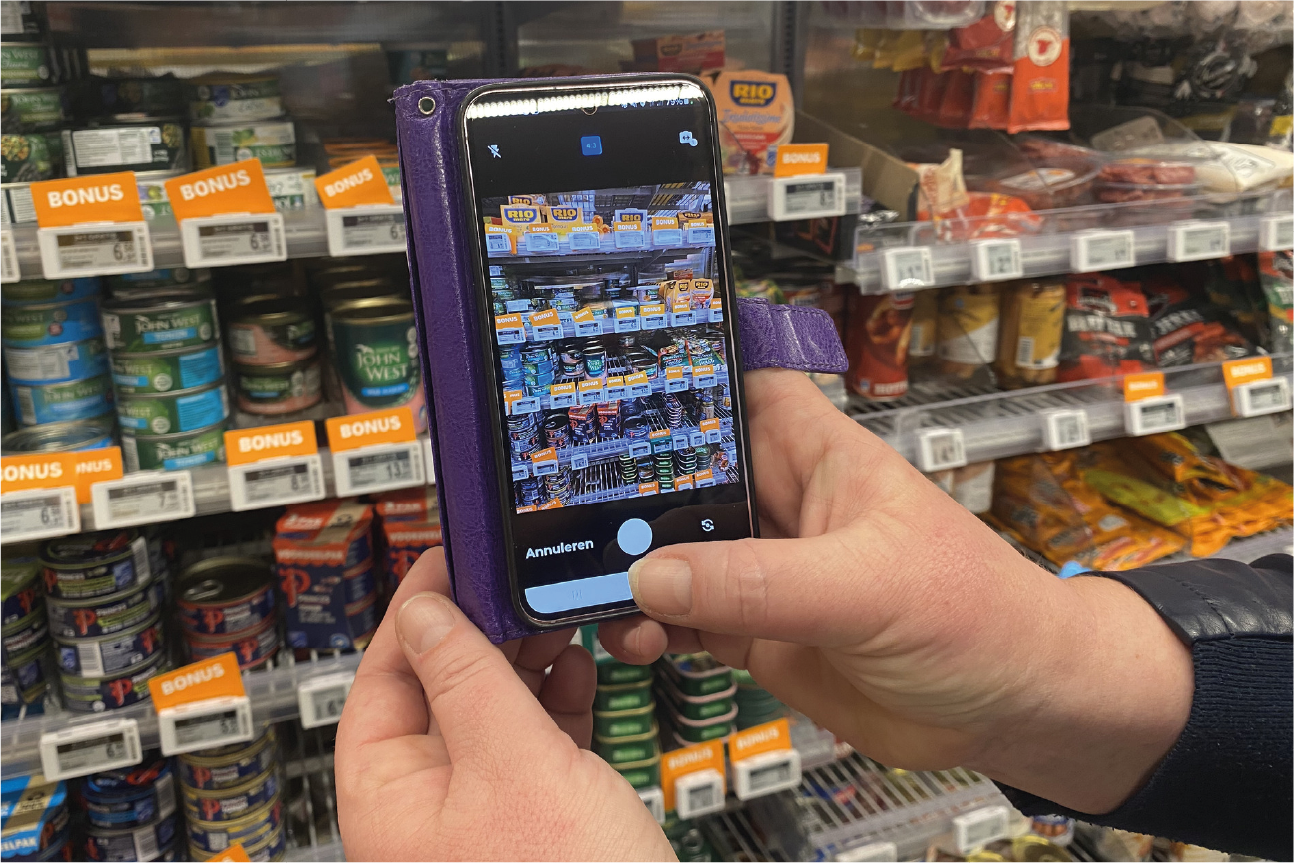- Insights
A day in a life of a Roamler | How can you guarantee the quality of the information provided by the crowd?
In this article, we will illustrate the processes to ensure the quality of the information gathered by the crowd, following Suzanne, a member of the Roamler crowd, for a day.

Keeping control over what’s happening in-store (so-called store execution) can be a real challenge for brands: complex planning, travelling time and long internal processes make it difficult to have real-time insights over the entire store universe. In short, it’s not possible to be everywhere at the same time. This is where crowdsourcing comes into play. By using a crowd that can quickly report on in-store situations, brands can take immediate, geo-located actions, reducing the likelihood of losses and improving overall sales performance.
How can you guarantee the quality of the information provided by the crowd? This is one of the most frequently asked questions when the topic of crowdsourcing comes up. To answer it, we have followed Suzanne, a member of the Roamler crowd, for a day. Based on her experience, we would like to illustrate the processes that ensure a high degree of quality and reliability of the information gathered.
Good instructions
Working with thousands of independent professionals comes with a challenge: how do you make sure everyone understands what you are looking for? Correct instructions are therefore very important. This topic receives the most attention at the start of every project, because this is where the success of a job is determined. Using the clients’ knowledge, combined with in-store knowledge, detailed instructions are made and followed by Roamlers, often using supporting photo and or video material.
“The instructions also focus on taking the right photos. If in doubt, I prefer to take more photos rather than fewer, to prevent an assignment from being rejected” says Suzanne.
All new assignments start with a so-called ‘softlaunch’, which means that a small group of stores is first visited with the agreed instruction. If the results are good (quality and completeness), the assignment goes live.

Four-eyes principle
“To further guarantee the accuracy and completeness of the information, Roamler uses the so-called four-eye principle. After I have checked in the store itself, every entry is checked again by an employee (reviewer)”, says Suzanne.
This corrects or rejects between 5 and 11% of submissions.

“In case of rejection, we are always explained what was wrong so that we can take it into account the next time. For example, I was recently given the tip to open refrigerator doors before taking the photo, because otherwise there is too much reflection and products and prices are difficult or impossible to see”.

Roamler newsletter
Get the latest insights, innovations, and opportunities when it comes to efficiency for your business.
More complex assignments
Over the years, crowdsourcing in retail has continued to evolve. Besides conducting store checks at scale, on-demand workers can also do merchandising activities. Here again, it’s very important to ensure that quality is delivered. In the case of merchandising activities, it is even more important because the on-demand worker visits the store on behalf of the supplier.
In order to ensure the right people, additional testing and selection tasks take place. What is immediately apparent here is the link many merchandisers have with the various brands they work for. In addition, there is often a strong link with their own environment, which ensures that the same on-demand merchandiser often visits the same store.
“My favorite merchandising job is for a well-known energy drink brand, because I really like that brand. I prefer doing them at petrol stations, because the staff are always friendly. The assignments are also reasonably quick to carry out and for good pay. What I also like about this is that I often pick up the same location, so I always meet the same people, know them by nickname and they recognize me now”, Suzanne.
Full store coverage
Apart from data quality and completeness, another factor is also very important: sufficient store visits. In general, crowdsourcing suppliers have the ‘coverage’ well in order. However, it may happen that special locations have to be visited for a particular assignment, or that there is an urgency or that visits can only be carried out on certain days/times.
To ensure that all these requirements can be met, you can work with community management. By means of targeted campaigns and by offering your community the possibility to reserve certain locations, you almost always reach all the right locations for the assignment, as Suzanne agrees: “I usually do assignments that fit into my planning or if I happen to be in the neighborhood or doing my shopping anyway”.

Another way to get that last mile or getting very complex tasks done is by increasing the fee at specific locations. In short, many processes and mechanisms are also available for complete coverage.
Conclusion
Crowdsourcing phenomenon has been active in the Netherlands for more than ten years and various suppliers have had hundreds of thousands of assignments carried out throughout the country, in all conceivable channels for practically all major brands. Of course, they only do this if there is value to be gained and if the quality is good. And ultimately to use the collected results, together with their retail partners, to take execution to the next level. Because every percentage point of better execution can mean thousands of euros in extra sales.